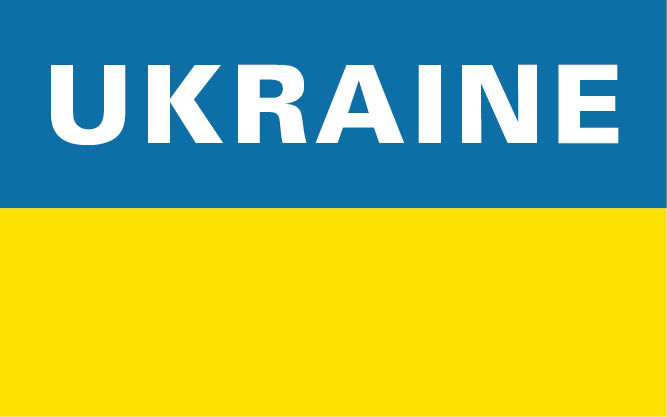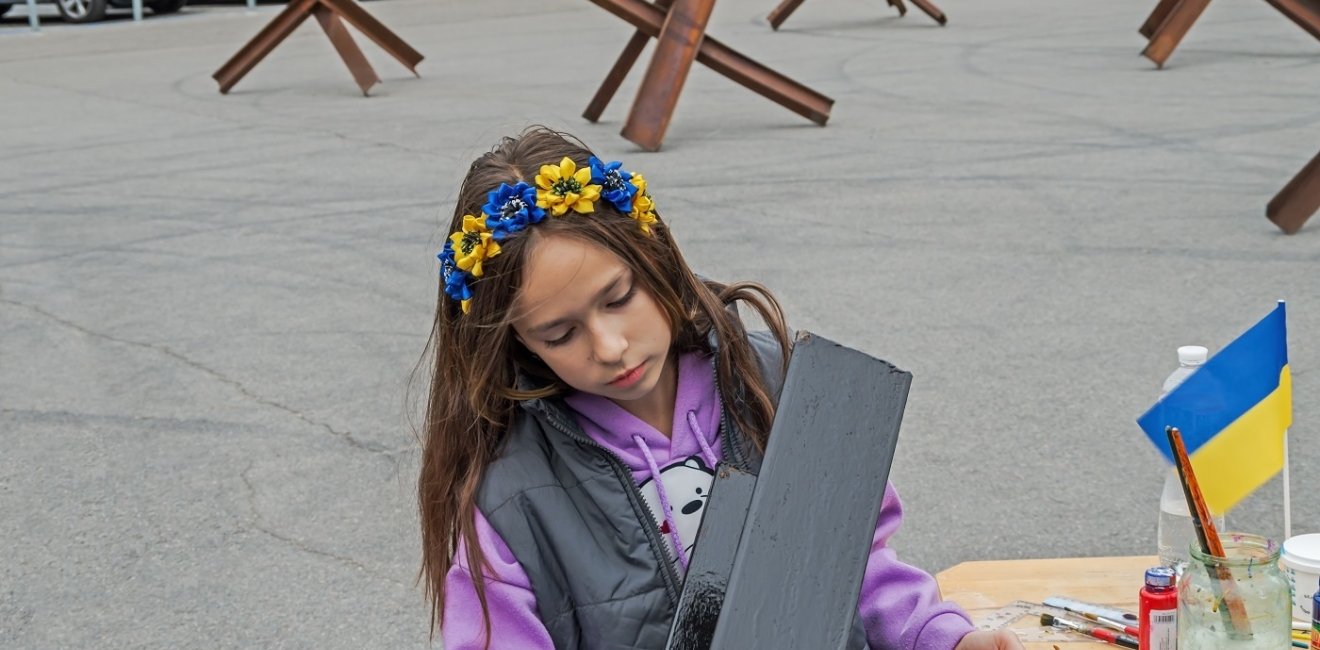
A blog of the Kennan Institute
Petro Buiak is an artist, musician, and photographer—all of which share the aim of creating images. Just 10 years old when Ukraine gained independence, he grew up defying categorization in the western city of Ivano-Frankivsk. He added soldier to his list of vocations when the Russians invaded his country on February 24.
Feeling not quite comfortable appearing before live audiences, he turned to printed and painted images to express the stories swirling about inside his head. Much of his earlier work drew on Hutsul folklore. The Hutsuls are an ethnic group living along the Romanian-Ukrainian border. Buiak also claims “Judeo-Masonic” linage which, he claims, taught him “how to successfully promote any kind of b*** s***.” This ironic reference mocks longtime Soviet and other conspiracy theories about an evil “Judeo-Masonic” collusion.
Buiak was drawn to Ivano-Frankivsk’s lively, even seedy artistic scene (for more on this scene, see earlier blog post). He became the lead singer in a band, playing two notes on a broken accordion. He participated in the self-proclaimed “schizophrenic performances” of the local Franshyza group. He embraced motorcycle culture. He began month's long expositions around the former Soviet Union, often hitchhiking along the way. “I never travel to see architecture or visit museums,” he said. “I’m interested in going to a bar, drinking with local people, eating their local food, and talking.” By 2015, these contrasting ventures came together in an exhibition at the Ukrainian “Gallery of Awesome Pictures.”
Promoting his “bad-boy” persona, Buiak presents himself as having tricked the art community into thinking he is an artist. “I’m an imposter,” he has said, “and drunkard, an image creator who usually comes to [an] exhibition and immediately looks at the buffet table, whatever hangs on the walls.”
Underneath this combination of bravado and self-deprecation is a creative, contemporary artist who has spent his life trying to blend together the, at times, sharply divergent appreciation of being a Ukrainian at this moment in history. His frenetic storytelling merges elements of what it means to be an artist, what it means to be from Ukraine, and what it means to be not from all of those other corners of the former Soviet Union he has visited on the back of a motorcycle or hitching in a truck.
Perhaps none of it seemed to serve a seriousness of purpose. Until, that is, the Russians invaded his country. Buiak enlisted to fight, and was wounded by artillery fire at the front lines. The arts community heard of his injuries and immediately organized to fund treatment and help in his recovery. They raised so much money, in fact, that he told his friends “to stop throwing money at me; I am okay.” Fortunately, his injuries, while severe, affected his left arm, so he can still paint. Presently, he is home for rehabilitation and is creating art once more.
Buiak’s is but one of thousands of stories about Ukrainian artists, writers, musicians, dancers, and performers who have joined the Ukrainian army to defend their country. Far too many have died, some have been seriously wounded, and many continue to fight. Their frontline service is an extension of the search for unique personal and shared Ukrainian identities which drove their creativity before the war.
Creative artists of all genres have played a significant role in the fighting, from the war’s first days. They have done so as soldiers, as promoters of Ukrainian culture, and as creatives turning their talents to promoting resilience. Field commanders have released painters, actors, dancers, and singers to head out into the community to paint, sing, and dance in an effort to lift morale. National leaders have encouraged others to head abroad to promote Ukrainian culture, often providing funds and visas to make such travel possible. These efforts are not supplementary to the task of winning the war; they are core elements of establishing a distinctive Ukrainian identity that will foster resilience in the future.
Vladimir Putin’s Russia has placed such cultural activism and achievement at the center of the war by declaring that there is no such thing as a distinct Ukrainian culture, a separate Ukrainian identity and history. Putin’s war has been driven by a desire to obliterate all manifestations of Ukraine. Artists, be they fighting on the front or not, have therefore become soldiers pursuing Ukrainian victory.
Dismissing the “bad-boy” and ‘bad-girl” artists of Buiak’s generation prior to the war would have been a mistake. Hidden behind all the posturing lurked the very serious enterprise of defining what it meant to be Ukrainian. Such efforts became deadly serious when Russia began to deny such an enterprise, eventually with guns, tanks, bombs, and rockets. Thousands of “creatives” have taken up the challenge and are helping their country defend itself from physical and cultural annihilation.
The opinions expressed in this article are those solely of the author and do not reflect the views of the Kennan Institute.
Author

Former Wilson Center Vice President for Programs (2014-2017); Director of the Comparative Urban Studies Program/Urban Sustainability Laboratory (1992-2017); Director of the Kennan Institute for Advanced Russian Studies (1989-2012) and Director of the Program on Global Sustainability and Resilience (2012-2014)

Kennan Institute
After more than 50 years as a vital part of the Wilson Center legacy, the Kennan Institute has become an independent think tank. You can find the current website for the Kennan Institute at kennaninstitute.org. Please look for future announcements about partnership activities between the Wilson Center and the Kennan Institute at Wilson Center Press Room. The Kennan Institute is the premier US center for advanced research on Eurasia and the oldest and largest regional program at the Woodrow Wilson International Center for Scholars. The Kennan Institute is committed to improving American understanding of Russia, Ukraine, Central Asia, the South Caucasus, and the surrounding region through research and exchange. Read more

Explore More in Focus Ukraine
Browse Focus Ukraine
Talking to the Dead to Heal the Living

Ukrainian Issue in Polish Elections




